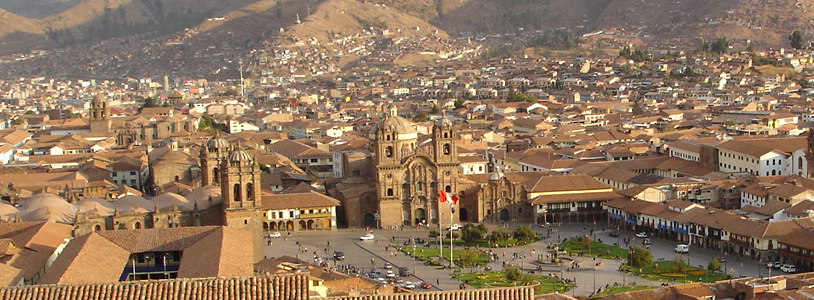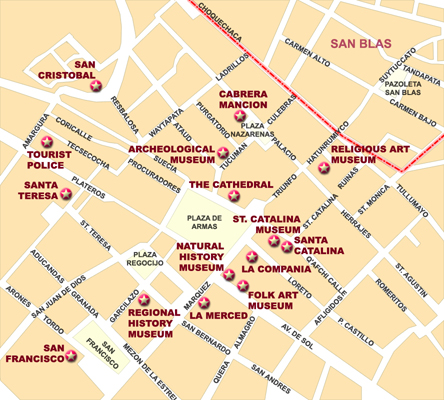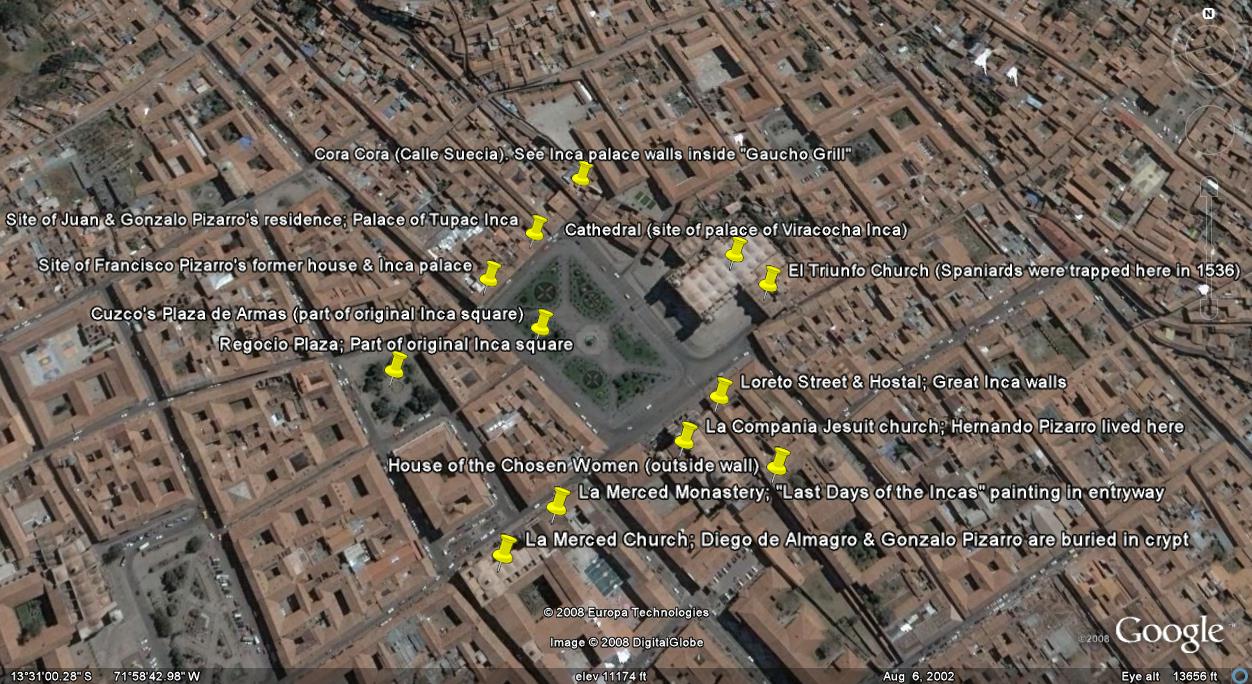The Last Days of the Incas’ Peru Tour #6 (Cusco)
posted on May 27th, 2008 in Cuzco: Information about the former Inca capital, Incas, Peru, The Last Days of the Incas' Peru Tour
Cusco (3-4 Days)
Visiting Cusco’s Plaza de Armas, or Main Square
On November 15, 1533, Francisco Pizarro and his men arrived in the city of Cusco, after skirmishing with an Inca army to the north of the city, but which during the night had withdrawn. Pizarro and his men thus walked unopposed into the city, and bivouacked on the main square. The square, twice the size of the present one now, was lined with the palaces of former Inca Emperors and these were quickly seized by Pizarro and his top captains as residences.
The original Inca square was divided in the middle by the Saphi River, which now runs beneath the buildings on the southwest side of the square (the portals of which are called Portal de Comercio and Portal de Confituría). The rest of the Inca square was partially comprised by what is now known as the Plaza Recogio, which lies a block to the west.
Locations of the Conquistadors’ and Inca Emperors’ Palaces
On the northwestern corner of the Plaza de Armas once stood the Casana, presumably one of the palaces of the last Inca emperor to rule over an undivided empire: Huayna Capac, the father of the two warring brothers, Atahualpa and Huascar, and also of Manco Inca and Paullu Inca. Francisco Pizarro quickly selected this palace to reside in and a corner of the palace still remains, part of what is currently the Pachacutec Bar & Grill…
To the right of Huayna Capac’s palace once stood the palace of another Inca emperor, Tupac (Topa) Inca, who was Huayna Capac’s father. Juan and Gonzalo Pizarro (both in their twenties at the time), took over this palace, alongside that of their elder brother, Francisco. After Gonzalo Pizarro’s ill-fated attempt in 1548 to rebel against the Spanish king, he was executed and his residence on Cusco’s square was destroyed and the land it stood on was sown with salt. It was here that the Spaniards placed a sign that read “here dwelled the traitor and rebel Gonzalo Pizarro.”
On the northwest side of the Plaza rises the (early 17th-century) Cathedral, thought to have been built on the site of the palace of Viracocha, one of the early Inca kings. The Spaniards wasted little time once they arrived in ripping down Inca buildings at will, no matter how sacred, and in using some of the Inca stones to erect their own structures, such as the numerous churches that now dot Cusco.
On the southeast side of the Plaza, where now stands the Jesuit church, La Compañía de Jesús, once stood the main palace of Huayna Capac, and the finest palace on the original Inca square. The Inca palace was known as the Amaru Cancha, or “Palace of the Serpents”; according to the first chroniclers, it had a gateway of marble as well as two towers roughly thirty feet in height. Some of the original walls of its enclosure are still visible along the western side of the Calle Loreto (the street’s eastern wall formed part of the Acclawasi, or the “House of the Chosen Women.” Within it lived the Inca’s concubines as well as the “chosen women,” those devoted to religious service. In the Hostal Loreto, you can stay in rooms, one side of which is the original Acclawasi Inca wall, complete with trapezoidal niches). The Amaru Cancha was given by Francisco Pizarro, as part of the spoils of Cuzco, to Pizarro’s brother, Hernando Pizarro and to one of his captains, Hernando de Soto.
(To be continued….)



